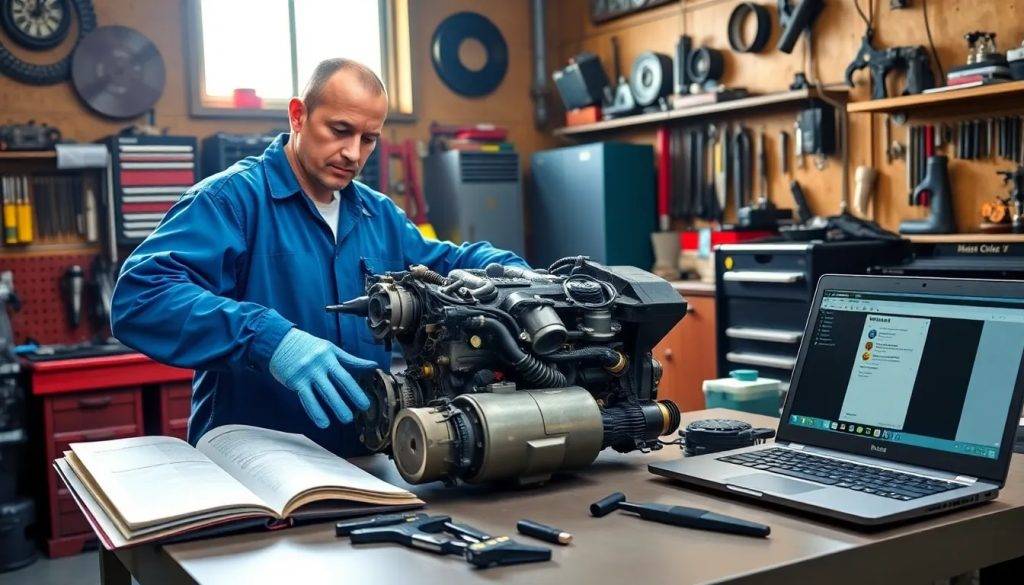6.7 cummins dpf delete problems explained

The debate surrounding the 6.7 Cummins DPF delete problems is one that many truck owners face. While some enthusiasts swear by the performance benefits, others highlight the potential legal and mechanical issues that can arise. Understanding both sides of this argument is crucial for anyone considering this modification.
In this article, we will explore the pros and cons of deleting the Diesel Particulate Filter (DPF) from a 6.7 Cummins engine, the problems that may arise, and the overall implications of such a decision.
- What are the main advantages of a 6.7 Cummins DPF delete?
- What are the disadvantages of a 6.7 Cummins DPF delete?
- What problems can arise from a 6.7 Cummins DPF delete?
- Is deleting the DPF right for your 6.7 Cummins?
- How does a DPF delete affect engine performance?
- What are the legal implications of a 6.7 Cummins DPF delete?
- How can you successfully perform a DPF delete on a 6.7 Cummins?
- What should you consider before proceeding with a DPF delete?
- Questions related to DPF deletes and their implications
What are the main advantages of a 6.7 Cummins DPF delete?
One of the most significant advantages of a 6.7 Cummins DPF delete is the improved engine performance. Without the DPF, there is less restriction on exhaust flow, which can lead to a noticeable increase in horsepower.
Another benefit is an enhancement in fuel economy. By improving the airflow and combustion efficiency, many owners report better fuel mileage, particularly when towing heavy loads.
- Increased horsepower: Many users experience a significant boost in power.
- Better fuel efficiency: Reduced back pressure can lead to improved mileage.
- Reduced maintenance costs: Without a DPF, there is one less component that may require costly repairs or replacements.
Moreover, many drivers notice improved throttle response, which enhances the overall driving experience. This performance boost is especially appreciated in towing situations, where engine power is critical.
What are the disadvantages of a 6.7 Cummins DPF delete?
While there are clear advantages, there are also several disadvantages of a 6.7 Cummins DPF delete that must be considered. One of the most pressing concerns is the increased emissions. This modification can lead to a vehicle that emits more pollutants, which is not only harmful to the environment but also illegal in many areas.
Additionally, deleting the DPF can void the manufacturer's warranty, leaving owners with potentially costly repairs if something goes wrong. Many drivers also report concerns over engine reliability, as improperly tuned engines can suffer from various malfunctions.
- Legal issues: Many regions have strict emissions laws that can result in fines and penalties.
- Warranty voiding: Deleting the DPF can negate warranties on both the vehicle and the engine.
- Potential engine problems: Improper tuning can lead to decreased longevity and reliability.
Moreover, once the DPF is removed, there is a risk of future complications, as some owners find it challenging to reintegrate the system if they decide to revert back.
What problems can arise from a 6.7 Cummins DPF delete?
Understanding the 6.7 Cummins DPF delete problems is essential before proceeding with this modification. One significant issue that can occur is the check engine light activation. This often happens because the vehicle's onboard diagnostics system detects the absence of the DPF.
Another common problem is increased soot buildup in the exhaust system. Without the DPF to filter these particulates, they can accumulate and potentially cause damage to other components, leading to costly repairs.
- Check engine light: Many owners face persistent warning lights post-delete.
- Soot buildup: Increased soot can damage exhaust valves and turbochargers.
- Fuel system issues: Poor tuning may lead to fuel delivery problems, affecting performance.
Finally, without proper tuning, the engine may run too lean or too rich, causing performance issues and possibly damaging internal engine components over time.
Is deleting the DPF right for your 6.7 Cummins?
Determining whether a DPF delete is right for your 6.7 Cummins depends on various factors including your driving habits, local laws, and personal preferences. If you primarily use your truck for towing and performance is a priority, a DPF delete could be beneficial.
However, if you live in an area with stringent emissions regulations, the risks might outweigh the benefits. It's vital to assess how often you will be using the truck and for what purposes.
Moreover, consider the long-term implications for your vehicle. If you plan to keep your truck for many years, the potential costs of repairs and maintenance should be factored into your decision.
How does a DPF delete affect engine performance?
One of the primary reasons truck owners opt for a DPF delete is the enhanced engine performance. With the DPF removed, exhaust gases can flow more freely, leading to increased horsepower and torque. This is especially noticeable in situations where heavy towing is involved.
Additionally, many users report a more responsive throttle, as the engine can deliver power without the restrictions imposed by the DPF. The overall driving experience becomes smoother, which many drivers appreciate.
- Improved acceleration: Reduced back pressure allows for quicker acceleration.
- Higher torque: Enhanced torque performance is often reported, aiding in towing scenarios.
- Turbocharger efficiency: The turbo can spool up faster without the DPF's restrictions.
However, it's crucial to have the engine properly tuned to maximize these benefits and avoid potential issues that can arise from an improper setup.
What are the legal implications of a 6.7 Cummins DPF delete?
One of the most significant concerns with a 6.7 Cummins DPF delete is the legal implications involved. In many regions, removing or altering emissions systems is illegal and can result in hefty fines.
Moreover, vehicles that do not meet emissions standards may fail inspections, leading to further complications. It is important to research local laws regarding emissions before making any modifications.
- Emissions compliance: Many areas enforce strict emissions regulations.
- Inspection failures: Vehicles may not pass emissions tests without a functioning DPF.
- Potential fines: Non-compliance can lead to significant financial penalties.
Always consult with local authorities or a legal expert to fully understand the implications of removing the DPF from your vehicle.
How can you successfully perform a DPF delete on a 6.7 Cummins?
If you've decided that a DPF delete is right for you, it is essential to follow the proper procedures to ensure success. First, invest in a high-quality DPF delete kit that is compatible with your engine.
Secondly, ensure that you have a skilled technician handle the installation and tuning. Proper tuning is critical to avoid performance issues and engine damage.
- Choose a reputable kit: Quality matters for long-term reliability.
- Professional installation: A skilled technician can ensure proper setup.
- Tuning is essential: Proper tuning maximizes benefits and prevents issues.
Finally, be prepared to monitor your vehicle after the delete to catch any potential problems early on. Regular maintenance and checks can help preserve the health of your engine.
What should you consider before proceeding with a DPF delete?
Before making the decision to delete the DPF from your 6.7 Cummins, there are several factors to consider. First and foremost, assess your local emissions regulations to ensure compliance.
Next, think about your driving habits. If you primarily use your truck for work or towing, the performance benefits may be worth the risks.
- Legal compliance: Always check local emissions laws.
- Driving purpose: Consider how often you’ll utilize the truck for heavy tasks.
- Long-term investment: Weigh the costs of potential repairs against the benefits of a DPF delete.
Finally, take into account your personal preference for vehicle modifications. Understanding the full scope of implications can help you make an informed decision.
What problems can a DPF delete cause?
Deleting the DPF can lead to various issues, including activation of the check engine light and increased soot buildup in the exhaust system. Many owners also report performance problems if their engines are not properly tuned post-delete.
Why not to delete 6.7 Cummins?
There are several reasons not to proceed with a DPF delete. Legal implications concerning emissions regulations, potential engine damage without proper tuning, and the risk of voiding a vehicle warranty are significant considerations.
What are the disadvantages of DPF delete?
The disadvantages include increased emissions, potential legal issues, and the risk of engine malfunction if not properly tuned. In many cases, the long-term costs can outweigh the short-term performance benefits.
How many miles will a deleted 6.7 Cummins last?
The lifespan of a deleted 6.7 Cummins can vary widely based on maintenance and driving habits. However, improper tuning can significantly reduce the longevity of the engine, potentially leading to serious issues before expected.
 6.7 cummins dpf delete instructions
6.7 cummins dpf delete instructions DPF delete ISX Cummins guide
DPF delete ISX Cummins guide 2012 6.7 cummins dpf delete guide
2012 6.7 cummins dpf delete guide DPF delete 6.7 Cummins 2012
DPF delete 6.7 Cummins 2012If you want to know other articles similar to 6.7 cummins dpf delete problems explained you can visit the category CUMMINS.
-
Interesting read. But isnt DPF delete illegal in some places? Cant ignore potential fines or voided warranties. Just a thought...
-
Sure, but isnt living on the edge what makes life exciting? Just a counter-thought...
-
-
Interesting read, but arent there legal implications to consider with a 6.7 Cummins DPF delete?
Leave a Reply

RELATED POSTS